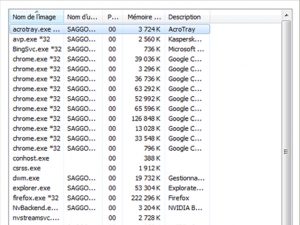What is the Blue Screen of Death?
Anyone who has ever owned a Windows PC is afraid of the ‘Blue Screen of Death,’ also known as ‘BSoD’.
The Blue Screen of Death is a Windows message that forces you to restart your computer to ‘fix’ the problem.
Restarting your computer in this way will cause you to lose what you were working (for example, Word’s useful auto-save feature won’t work in this case).
Cutting the power to your computer to restart like this will also damage your hard disk. Too many Blue Screens of Death and too many restarts, and you will need to buy a new hard disk.
That’s a major hassle. Learning how to prevent the Blue Screen of Death in the first place should be a priority for every PC user.

What Triggers the Blue Screen of Death? Generally speaking, the BSoD is caused by two things:
1 Bad Registry Keys
Windows relies on small data files called registry keys to run every single program.
Over time, registry get duplicated, become corrupted, or become outdated.
If Windows tries to run a software program with old, outdated, or faulty registry keys, the program will crash. In the more serious cases, you will encounter the Blue Screen of Death.
Periodically cleaning your system registry is a great preventative measure in this case.
1 Faulty Device Drivers
Your computer is actually a collection of different pieces of hardware including your keyboard and your computer mouse. USB thumb drives are another example.
Your computer relies on small software programs called ‘drivers’ to operate these devices.
If the device drivers are old or outdated they can cause a Blue Screen of Death. Sometimes conflicting drivers will cause the BSoD.
Being proactive and making sure your drivers are up to date is a good way to prevent Blue Screen of Death.
Removing duplicate drivers is also another method to avoid this terrible message.
There are special programs you can download from the Internet that make this process quick and easy to do.

Optimize your PC performances
A clean PC is the basis for having good use of your machine. OneSafe PC Cleaner is a complete software that helps you clean your computer deeply. It scans your entire hard drive in minutes and...
Read MoreOptimal performance : updating your drivers
Owning quality computer equipment is essential for good use of your PC. That’s why updating your drivers is important, and some softwares can help you do so very quickly. OneSafe Driver Manager automatically detects outdated drivers etc ...
Read More












 Is your PC slow?
Is your PC slow?
 Speed Up Your PC
Speed Up Your PC



 3 tips to increase your PC’s speed
3 tips to increase your PC’s speed
 How to properly use Windows Task Manager ?
How to properly use Windows Task Manager ?
 How to troubleshoot a slow internet connection?
How to troubleshoot a slow internet connection?
 What is the Blue Screen of Death?
What is the Blue Screen of Death?
 How to clean your PC or laptop screen?
How to clean your PC or laptop screen?
 How to defrag your hard drive?
How to defrag your hard drive?
 How to protect your confidential information online?
How to protect your confidential information online?
 What is the Windows Registry?
What is the Windows Registry?